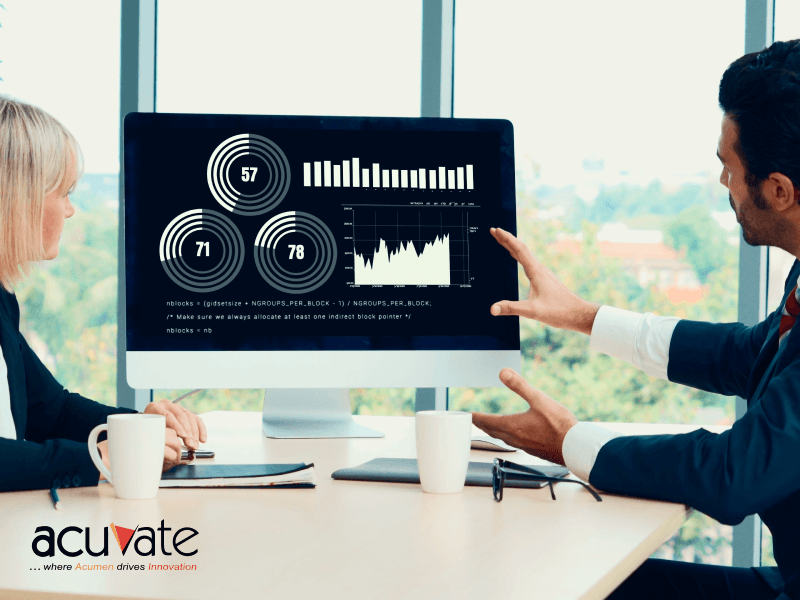Digital Transformation
If you’ve yet to hear about this IT phenomenon, it’s likely you’re not among the 44 percent of businesses implementing a digital-first approach to business processes, operations, and customer engagement.
ZDnet defines today’s digital transformation as, “using digital technologies to remake a process to become more efficient or effective. The idea is to use technology not just to replicate an existing service in a digital form, but to use technology to transform that service into something significantly better.”
As today’s organizations embrace digital tools to create new processes or modify existing ones, they’ll also inherently impact other important aspects, like workplace culture and customer experience. With digital transformation, companies are re-evaluating everything they do, from internal systems to online and in-person customer interactions.
It’s no secret technology has been a driving force in business transformation for years, but new technologies are now launching faster than ever. In fact, the Tech analyst IDC says worldwide digital transformation spending will reach almost $4 trillion in 2027.
Here are the top four technologies impacting today’s digital transformation:
1. Cloud Computing
Although the concept of cloud technology isn’t new, it’s quickly become a valuable tool for organizations of all sizes in every industry, with data pointing to business efficiencies, cost benefits, and competitive advantage.
Many businesses are already using cloud technology, whether they realize it or not. According to research from the International Data Group, 73 percent of businesses are already using the cloud in one capacity or another, and 17 percent say they plan to implement cloud-based solutions in the next year. Many digital tools that businesses deem “critical” to their daily operations actually run on the cloud, from simple solutions like Google Drive and Slack to more complex software for supply chain management or enterprise resource planning.
Cloud solutions are also adapting to meet the needs of businesses in 2025. For example, businesses are increasingly integrating multi-cloud strategies, ensuring redundancy, security, and access to specialized services. By leveraging cloud-native AI tools or cloud-based big data analysis, companies are discovering more innovative ways to optimize operations, improve collaboration, and enhance scalability.
Businesses that have integrated cloud-based solutions into their workplaces are reaping its many benefits. Cloud computing can offer business access to its data and applications from anywhere, at any time, from many types of devices, while also remaining cost-efficient. In addition, the cloud gives small businesses access to technologies that previously were out of their reach, allowing them to compete with their larger competitors.
2. Artificial Intelligence (AI)
AI has quickly become a popular application for many business sectors because of its focus on making intelligent machines that are capable of solving some problems as well as (or better than) people can. More and more companies have developed AI applications, lowering costs and making AI accessible to a much wider range of businesses. Gartner reports AI adoption has tripled in the last year alone, with an estimated 37 percent of firms now implementing AI in some form.
AI also fuels other popular technologies, like automation and chatbots, which help professionals across many disciplines complete processes more efficiently and accurately. AI-equipped tools are optimizing internal business operations and allowing employees to hone their creative skills and make data-driven decisions.
As we approach 2025, AI-driven automation is reshaping industries by enabling businesses to deliver smarter, faster, and more efficient services. Industries such as healthcare, manufacturing, and finance are tapping into AI’s predictive analytics and intelligent systems to make better decisions. In customer service, AI-powered agents are evolving from basic chatbots to Agentic AI that proactively assist customers, improving satisfaction and reducing operational costs.
3. The Internet Of Things (IOT)
The IoT is accomplishing more than simply establishing connections between devices and systems; it’s opening up opportunities for creating previously unattainable new products and services.
IoT tools can discover, capture, and act on the various data sources now available from a plethora of devices, sensors, and systems around the globe. Organizations using the IoT will have an in-depth view of their customers’ requirements in a way that wasn’t previously possible and can then use those insights to improve the customer experience.
As we head into 2025, IoT will play a crucial role in the future of smart cities and connected environments. For instance, autonomous vehicles and smart infrastructure will continue to evolve, while industries like retail and manufacturing will enhance product tracking and supply chain efficiency with IoT-enabled sensors.
A great example of IoT use is in the airport industry. Some airports are employing IoT sensors (particularly cameras) to provide better customer experiences for passengers waiting or passing through their facilities. Problems or inconveniences, like broken escalators, security line backups, dirty restrooms, and bottlenecks within corridors can be identified and addressed. Airports can respond by dispatching maintenance teams or opening gates, depending on flight arrivals and the amount of foot traffic.
4. Big Data
Data itself is a familiar concept, but the amount of data created since the beginning of the digital age has transformed the way we use it. Today’s society generates massive amounts of data. In fact, studies have predicted more than 90 percent of the world’s data was created in the past two years.
The greatest benefit of big data isn’t how much data a business has, but what they can do with it. With big data, today’s businesses can take information from a number of different sources and analyze it to drive smart decision making. Decisions supported by massive amounts of data enable businesses to anticipate needs, mitigate risk, deliver more relevant products, and personalize services.
The combination of AI and big data will allow businesses to unlock predictive analytics and real-time insights that were once unimaginable. This will help organizations not only better serve their customers but also design products and services that meet their evolving needs.
Although this data is extremely useful for companies, many don’t know how to go about interpreting or analyzing such large amounts of information. However, there are plenty of digital tools businesses can use to analyze internal and external data.
How Acuvate Can Help: Empowering Your Business with Emerging Technologies
At Acuvate, we understand that businesses today face immense pressure to adopt and integrate new technologies to remain competitive. As cloud solutions, AI, IoT, and big data become increasingly vital to digital transformation, we are here to help you navigate this complex landscape and implement cutting-edge technologies that drive genuine business value.
Here’s how Acuvate can assist your business in harnessing the power of these technologies:
Seamless Cloud Integration: We help businesses leverage the advantages of cloud computing to scale operations, enhance collaboration, and reduce costs. From developing multi-cloud strategies to providing cloud-based AI solutions, we ensure that your cloud adoption is prepared for the future.
AI Solutions for the Digital Age: Our AI-driven tools assist businesses in automating processes, improving decision-making, and enhancing customer experiences. Whether it’s integrating AI chatbots or implementing Agentic AI for proactive customer service, we customize solutions to meet your unique needs.
IoT-Enabled Transformation: Acuvate specializes in helping businesses implement IoT solutions that uncover new insights and enrich the customer journey. By integrating sensors, devices, and real-time data analysis, we enable smarter business decisions.
Big Data and Predictive Analytics: Our big data solutions empower organizations to extract valuable insights from large datasets, enabling businesses to predict customer behavior, enhance operational efficiency, and deliver personalized services at scale.
Partnering with Acuvate allows your business to stay ahead of the curve by integrating emerging technologies that not only transform your operations but also position you for long-term growth. Contact us today to discover how we can empower your digital transformation journey in 2025 and beyond.

Contributor to Enlightened Digital, UX Designer and technology writer from New York City. If I’m not writing my latest blog post in my kitchen, you’ll likely find me strolling through Central Park, cappuccino in hand.



